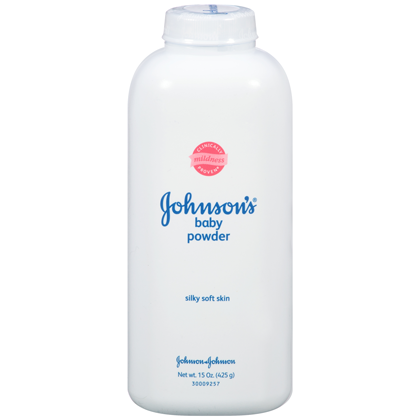Johnson & Johnson under fire over cancer charges
 |
| Iconic family and personal hygiene brand Johnson & Johnson sentenced to pay hefty damages in cancer trial |
| RELATED CONTENTS: | |
| Evidence on talc cancer risk differs for jurors, researchers | |
| J&J must pay US$72 million for cancer death linked to talcum powder: lawyers | |
Majority support to the plaintiffs
Lois Slemp filed the lawsuit against Johnson & Johnson (J&J) and its exclusive talc-provider Imerys Talc (Imerys) at the St. Louis Circuit Court (Missouri), accusing them of failing to warn consumers about the potential cancer risks from talc-based products despite being aware of weighty scientific evidence suggesting the mineral is a carcinogen.
Slemp, who was diagnosed with ovarian cancer in 2012 which has now spread to her liver, is undergoing chemotherapy. She claims that her cancer has developed after using J&J’s Baby Powder and Shower to Shower Powder for four decades.
The St. Louis court, subject to a subsequent appeal, has ruled in favour of the plaintiff, awarding $5.4 million in compensatory damages (to be divided between J&J and Imerys on a 99-1 per cent basis) and $105 million in punitive damages, $50,000 of which will burden Imerys.
Ted Meadows, a lawyer of Slemp and other plaintiffs, was cited by CNBC as saying, “Once again we’ve shown that these companies ignored the scientific evidence and continue to deny their responsibilities to the women of America.”
J&J, however, has already appealed against the Circuit Court’s decision, holding fast in their defense of the company’s trademark product Johnson’s Baby Powder.
The Slemp trial is the fifth court case brought against J&J, carrying the largest settlement since the company has been flooded with cancer accusations. Currently, about 2,400-3,000 lawsuits have been filed against the company for not providing adequate warning about cancer risks. The stellar damages awarded are more than likely to bring more filings at the St. Louis court which has on three previous occasions ruled in favour of plaintiffs.
In the course of the four previous talc trials, $197 million has been awarded in three cases, with only one ruling for J&J. The first lawsuit awarded $72 million in February 2016 to the family of Jacqueline Fox, who died from ovarian cancer, opening the floodgates on J&J. Subsequently, the court awarded $55 million to another plaintiff in May 2016, and $70 million in October 2016. Breaking the successful run, in March 2017, a Missouri jury ruled in favour of J&J, marking their first (and only) trial win.
However, none of the lawsuits have been fully played out yet, as J&J and Imerys have been consistently appealing after each case lost. In fact, the Missouri Court of Appeals will hold oral arguments challenging the first talc verdict (Jacqueline Fox) on May 10.
Scientific evidence and the legal grey area
At court, the issues at hand are of a particularly complex interaction between medical scientific principles and the law of tort. The US courts are in a need to establish sufficient causal link between developing ovarian (or other types of) cancer and the use of talc-based female hygiene products and then transfer these findings to assess Johnson & Johnson’s duty to warn customers.
While the St. Louis court and Judge Rex Burlison, who presided over the previous four talc trials, have more often than not found a sufficient breach on the part of J&J and Imerys in their failure to provide warnings to customers, it is interesting to see the underlying arguments as both the causal link between the talc products and cancer and J&J’s assumed duty to warn are of a hazy grey area and sufficient rulings by the Court of Appeal will provide important precedent in consumer protection and product liability cases in the future.
It is always a fascinating point in adjudication when court judges need to evaluate and rule on issues related to scientifically debatable points. Adjudicators, while doubtlessly of impeccably sound judgement, are not experts on medical science and are often ill-equipped to pass judgement in cases where even the medical scientific community is struggling. This is true in the case of talc trials, as despite the rulings of Judge Rex Burlison, it is far from certain that 1) talc can be pronounced as a carcinogen, while the US regulatory authorities have not pronounced it so, and 2) even if talc is proven to increase the risk of developing cancer, that the actual disease was caused by talc-based products.
It is an established procedure to invite members of the scientific community to give testimony on points that are vital to a legal case. The talc trials have seen two of these so-called Science Days, one on the Federal level on January 26, 2017, and one on the state level, in California, on March 7, 2017.
The arguments essentially came down to the following points. The plaintiffs, relying on a massive number of case control studies, “focused on the alleged role of talc in the inflammatory process and strong but disputed implications that anything that enhances inflammation must necessarily cause cancer.” Additionally, there were mentions of an industry lobby to block efforts to classify talc as a carcinogen.
The defence, represented by Dr. Graham Colditz, made his argument based on the different types of ovarian cancer and the uncertainties regarding the known causes of the condition. Dr. Colditz argued that even if it was possible to prove ‘increased risk,’ it was ultimately impossible to prove that talc-based products are the actual cause of the condition in question.
During the court proceedings of Jacqueline Fox, as reported by Bloomberg, Roberta Ness (former dean of the University of Texas School of Public Health and former president of the American Epidemiological Society) testified that various studies point to a higher likelihood of developing cancer with increased frequency and duration of using talc-based products. She pointed out that the relation between breast cancer and hormone therapy is statistically smaller than that of talc and ovarian cancer, yet it is considered to be a real risk.
At the Fox case, J&J and Imerys contended that a causal relationship is not biologically plausible, as it cannot be proved that “talc particles can move up through the reproductive tract and or that once there they could cause cancer.”
During the Slemp case, the defendants maintained that the plaintiff’s arguments “were based on flawed and out-dated scientific findings and that talc is no more dangerous than alcohol or red meat, neither of which carries a cancer warning label,” as cited by Courtroom View Network.
Johnson & Johnson’s mishaps scaring away customers
Taking a glance away from J&J’s talc-based products, the company has been having legal issues over its drugs and medical devices since 2013. As reported by Bloomberg, since 2013 Johnson & Johnson has spent $5 billion to resolve legal claims.
In 2013, the company agreed to pay $2.2 billion to settle criminal and civil probes over allegations that it illegally marketed Risperdal, an antipsychotic drug, to children and the elderly. Similarly, it also agreed to pay $2.8 billion to resolve a lawsuit about its artificial hips and $120 million for faulty vaginal-mesh inserts. All in all, according to J&J’s 2015 annual report, more than 75,000 people had filed product liability claims against them, not including the talc-powder cases.
These mishaps call into question Johnson & Johnson’s image of a time-tested, reliable, and safe personal hygiene brand, especially when it comes to childcare.
News of the talc trials have already reached as far as Vietnam, where many of the company’s long-standing and faithful consumers are considering blacklisting their products from their shopping lists.
Timeout magazine cites 28-year-old Thu Nga as saying, “Johnson & Johnson should have warned its customers about the risk of talc or formaldehyde. From now I will switch to other baby brands from Japan or Singapore.”
Nguyen Phuong Thao, a 25-year-old mother, was also dismayed by the talc trials. “The cancer news is terrifying. I have been using Johnson & Johnson powder for about three months since my baby was born. I chose this product at first because of its reputation and affordable price.”
While the talc trials are far from being over, with the relevant sides lining up for the next round at the Court of Appeal, news struck terror in the hearts of loyal consumers and may put a significant dent in Johnson & Johnson’s image as a go-to personal hygiene brand.
What the stars mean:
★ Poor ★ ★ Promising ★★★ Good ★★★★ Very good ★★★★★ Exceptional
Latest News
More News
- MB aiming for 30 million customers by end of year (April 22, 2024 | 17:43)
- Vietnam central bank postpones gold bar auction (April 22, 2024 | 15:27)
- Freshfields promotes Eric Johnson to international partnership in Hanoi (April 22, 2024 | 08:00)
- Vietnam asks Apple to make it global production base (April 16, 2024 | 16:11)
- Experts give insight into Vietnam's retail sector (April 16, 2024 | 09:00)
- Amendments to gold regulations on agenda (April 12, 2024 | 16:10)
- PV Power secures $300 million loan to fund LNG plants (April 10, 2024 | 17:06)
- Wartsila CEO explores outlook of Vietnam's energy transition (April 10, 2024 | 15:22)
- Driving dual transformation (April 09, 2024 | 17:05)
- Development highlights in Q1 through expert’s lenses (April 08, 2024 | 16:48)


















 Mobile Version
Mobile Version